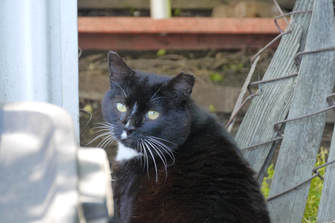 Of all the zoonotic diseases, rabies is one of the most feared and misunderstood. Many discussions on rabies in the United States focus on feral cats; which misrepresents the issue, because studies show the main transmission of rabies to humans is from bats. The recent case of the 6-year-old boy dying in Florida after being scratched by a rabid bat illustrates the risk bats can pose. Bats are vital to our ecosystems as pollinator species and we should work to protect them and others from rabies. Since the 1980s, the vast majority of human cases of rabies in the United States and Canada were from bats[1]. Bats and other species such as raccoons, skunks, and foxes are referred to as vector species, because they are the most common rabies carriers and pass the disease onto others. The Centers for Disease Control (CDC) reported 23 cases of rabies in humans in the United States and Puerto Rico from January 2008-September 2017. Eleven of these cases were from bats and zero of these cases were from cats[2]. The risk of contracting rabies from bats may increase over time as climate change affects their range areas. As the temperatures get warmer, bats will expand their range, bringing the disease with them[3]. A study of over 200,000 bats found that 6-7% had rabies[4]. Rabies is a potentially fatal disease and our government should employ a robust, nonlethal program to combat rabies from bats. Bats make up 20% of the world’s mammals and are instrumental to the functioning of our ecosystems[5]. Similar to feral cats, efforts to eliminate rabies by killing bats would not only be cruel, but also ineffective, costly, and difficult to implement. Nonlethal control has proven to be more effective over the long term. Furthermore, programs to address climate change will help reduce the spread of rabies and will improve the overall health of our planet. Alley Cat Rescue advocates for a three-step approach to nonlethal rabies control: 1. Implement widespread oral-vaccine immunization barriers for key wildlife vector species, primarily raccoons and skunks. 2. Continue to research rabies vaccines for bats[6]. 2. Educate the public on steps to minimize human risk from contracting rabies from wildlife, including vaccinating outdoor cats and dogs and reporting sick bats to wildlife groups or the local health department. (Do not kill bats indiscriminately. They are a vital asset to our environment.) 3. Recognize and support the vaccination and nonlethal management of feral cat colonies as an effective and important part of a comprehensive rabies (and population) control program. [1] De Serres, G., Dallaire, F., Cote, M. & Skowronski, D.M. (2008). Bat Rabies in the United States and Canada from 1950 through 2007: Human Cases with and without Bat Contact. Clinical Infectious Diseases, 46(9), 1329-1337. [2] “Human Rabies.” N.d. Retrieved from https://www.cdc.gov/rabies/location/usa/surveillance/human_rabies.html. [3] Bazilchuk, N. (2005). “Warmer Weather May Bring Bats and Rabies.” Frontiers in Ecology and the Environment, 3(9), 464. [4] Patyk, K., Turmelle, A., Blanton, J.D. & Rupprecht, C.E. (2012). “Trends in national surveillance data for bat rabies in the United States: 2001-2009.” Vector-Borne and Zoonotic Diseases, 12(8), 666-673. [5] “Arizona’s Bats”! N.d. Retrieved from https://www.sierraclub.org/sites/www.sierraclub.org/files/sce/grand-canyon-chapter/conservation/Bats%20and%20climate%20change.pdf. [6] Stading, B., Ellison, J.A., Carson, W.C., Satheshkumar, P.S. & Rocke, T.E. (2017). “Protection of bats (Eptesicus fuscus) against rabies following topical or oronasal exposure to a recombinant raccoon poxvirus vaccine.” PLoS Neglected Tropical Diseases, 11(10), e0005958.
0 Comments
Leave a Reply. |
Details
AuthorAlley Cat Rescue is leading in the way in promoting humane and compassionate care for ALL cats. Archives
April 2024
Categories
All
|
 RSS Feed
RSS Feed